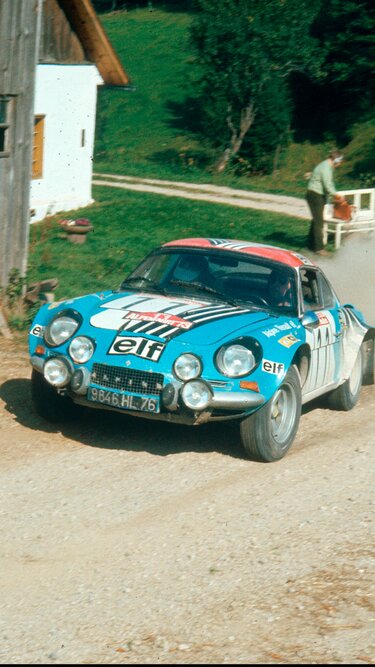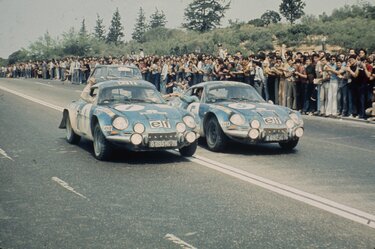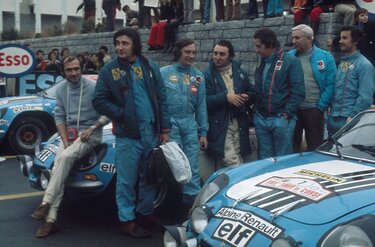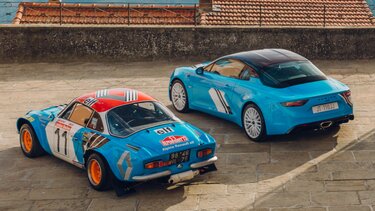
A110 San Remo 73
DRIVE A LEGENDThe inaugural Rallye San Remo was held in 1928 and it remained on the World Rally Championship calendar from 1973 until 2003. There was a duality to this event; the glamour of the Italian seaside town leading to gruelling stages above, as well as the mixture of tarmac and gravel surfaces that kept drivers truly on their toes.
These stages felt made for the nimble responses of a rear-engined berlinette, however, and in the World Rally Championship’s inaugural 1973 season the Alpine A110 scored a famous victory here.
Two places on the podium – including a win for the no. 1 car of Jean-Luc Thérier and Jacques Jaubert – sealed a world title for Alpine, placing a brand less than two decades old convincingly above its established rivals.
SAN REMO 73, WORLD CHAMPION
It’s 1973 and the debut World Rally Championship season. Three A110 berlinettes are gathered in glamorous San Remo, primed and ready to attack the tough stages that snake out of the town.
Two of them make the podium, with Jean-Luc Thérier and co-driver Jacques Jaubert lifting the winner’s trophy with a startling six-minute lead on their nearest rival. Alpine’s fifth win of the season is enough to bring the world title to Dieppe with three rallies to spare.
THE FOUR MUSKETEERS
The car is only half the story of Alpine’s famous 1973 World Rally Championship title. A great machine needs great athletes to extract the best from it.
Jean-Luc Thérier scores most points with three wins in WRC’s debut year, though individual driver’s trophies are yet to be awarded.
His teammates Bernard Darniche, Jean-Pierre Nicolas and Jean-Claude Andruet - altogether “ the four musketeers ” - also score crucial wins to bring the silverware to Dieppe’s cabinet.
Between heritage and modernity
Underdog spirit but with technical expertise underpinning it – just like the A110 of 50 years later. It’s now available as a striking San Remo 73 edition to celebrate that famous win, limited to 200 units.
It celebrates the colours of victory with its Caddy Blue new livery and red carbon roof.


